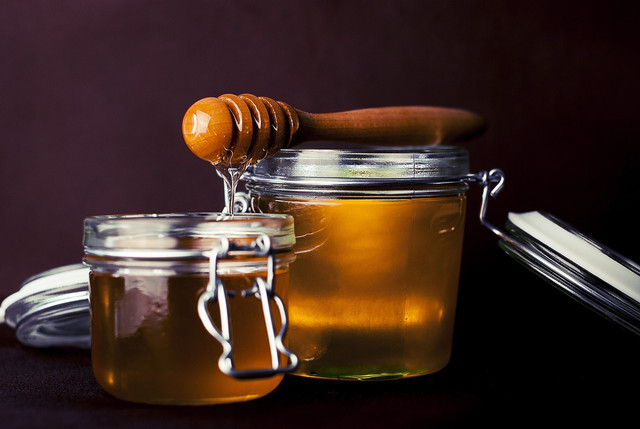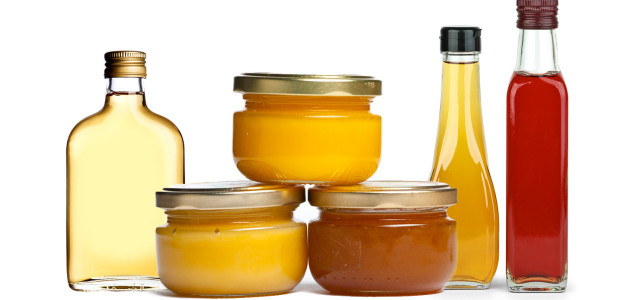Does honey go bad? It’s one of the most commonly asked questions about this natural sweetener. Learn more about the shelf life of honey and how to use it here.
Honey is a natural sweetener that comes from bees and can be enjoyed in many ways. Depending on your definition of veganism, it’s a product that you may try to avoid. It’s known for its long shelf life, but does honey go bad? We take a closer look.
Do you know about the health benefits of raw honey? Find out more: Why Raw Honey Stands Out from Regular Honey Varieties
Characteristics of Honey

(Foto: CC0 Public Domain / Unsplash / Danika Perkinson)
There are more than 300 distinct types of honey available in the United States, but clover honey is the most commonly produced variety.
- Color and flavor: Honey’s color and flavor changes depending on which plants the nectar comes from. Generally speaking, the darker the color, the stronger the flavor.
- Content: Honey is said to be 80% sugar and 18% water. Due to the small amount of water, bacteria and mold have a minimal breeding ground.
- Texture: Due to the thickness of honey, oxygen can’t easily penetrate it. This is good news, as bacteria need oxygen to thrive. The presence of gluconic acid means honey has a slightly acidic pH level, which inhibits microbial growth.
Does Honey Go Bad?
Honey doesn’t spoil, but it can go bad if contaminated or stored incorrectly. If you see visible mold, notice a fermented smell, or if it just smells off to you, throw it out. You may be wondering why honey you buy at the grocery store has an expiration date if honey doesn’t go bad. This is to help stores keep the freshest products on their shelves. The honey will be good for years if the seal hasn’t been tampered with.
You may notice that your honey has crystallized — that doesn’t mean it’s gone bad. It’s still good to eat. All it means is that some of the sugar has separated from the water and transformed into crystals. If you aren’t a fan of the texture, you can gently heat it in a water bath over low heat.
How to Store Honey



(Foto: CC0 / Pixabay / fancycrave1)
In order to ensure your honey does not go bad, there are a few key things to keep in mind.
- Store it in an airtight container to prevent contamination from environmental microbes. This also helps prevent the absorption of additional moisture, which aids bacterial growth.
- Keep the container in a dry and cool area. If stored in the fridge, crystallization will occur faster. If you don’t like that texture, store it in a cupboard or pantry.
- Avoid cross-contamination. Use clean and dry utensils only to spoon honey out of the jar, otherwise it might be contaminated by unwanted bacteria and mold.
Using Honey: Recipes and Tips
Does honey go bad? It generally doesn’t. However, if you’re looking to use up some honey, try the following recipes:
- Homemade cough syrup
- Fire cider or oxymel as an immune system booster
- Granola bars
- Poured over cast iron pancakes
- Drizzled on homemade ice cream
- Coconut oatmeal cookies
- DIY peel-off face masks
- Avocado honey face mask
If you’re looking for another natural sweetener that doesn’t go bad, try maple syrup.
Read more:
- Vegan Honey Alternatives: 4 Plant-Based Substitutes
- Is Honey Healthier Than Sugar?
- 10 Small Ways to Help Bees That Will Make a Difference
Do you like this post?







